You have a guitar, or you’ve seen a guitar, and it’s an unusual one. You don’t know what it is. How do you find out more about it? We’re going to assume you’ve been lucky and there is at least a name on the headstock. Trouble is, that word or words on the head might actually be the cause of the confusion. How so? Because you’ve never heard of that name.
Just the other day, I happened to be looking into a guitar owned by a French guitarist I know, Jean Louis, who’s played guitar for a long time and has owned some fine instruments (including a Jacobacci Gimenes, a Gibson L-5CT George Gobel, and a Gretsch Van Eps seven-string, among many others).
He has a passion for Charlie Christian, as one of the pioneers of bebop, as well as those influenced by him, including Barney Kessel, Tal Farlow and others, and a related passion for guitars with Gibson’s early bar pickup, known as the Charlie Christian. When some years ago he saw a similar pickup on an unusual guitar that was for sale, he snapped it up.
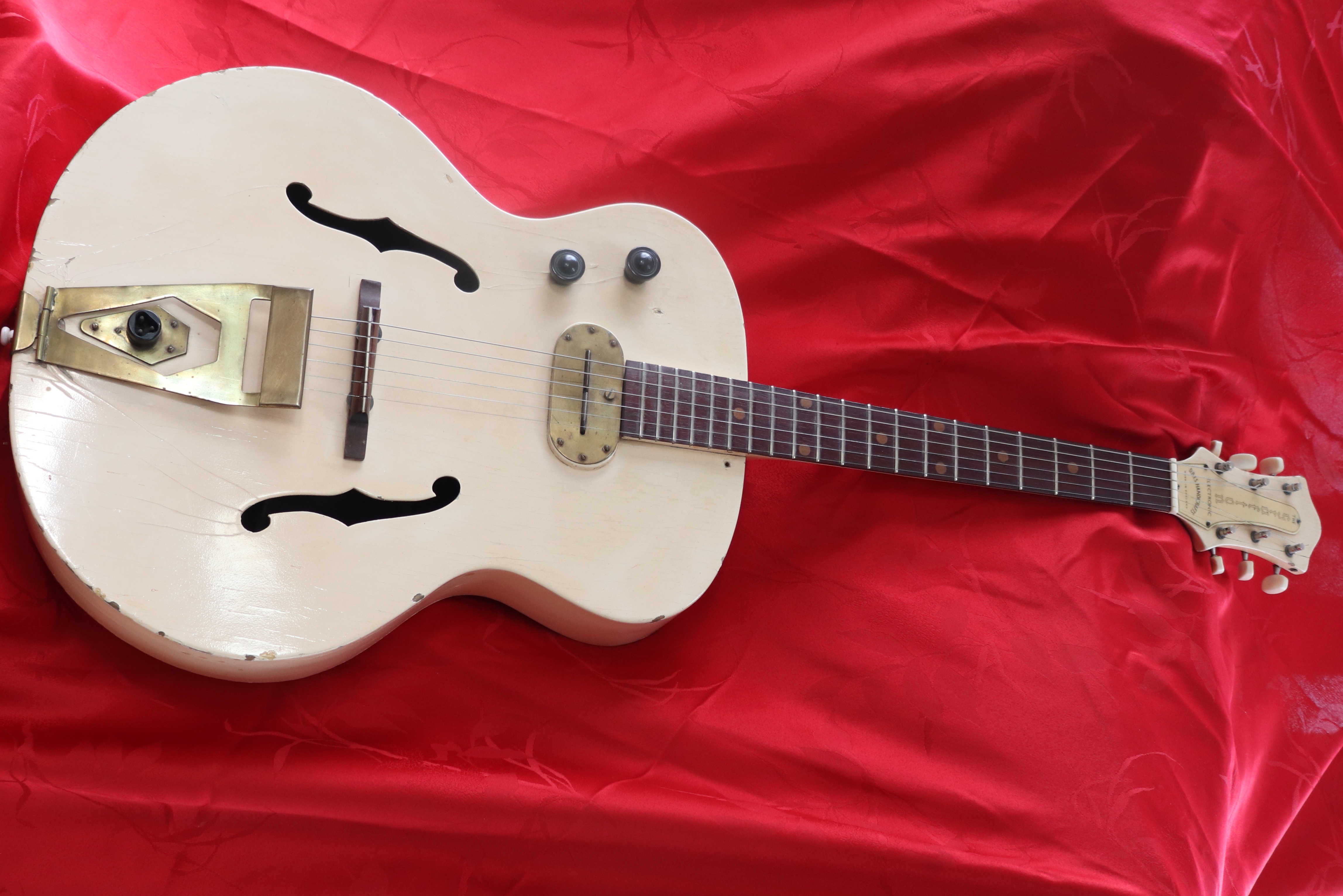
It’s certainly an intriguing instrument. It’s a white-finished electric hollowbody with f-holes, it has that single bar pickup at the neck, and it’s got two controls on the upper bout, a simple bridge, and a large tailpiece with an unusual three-pin output jack at its center. All this implies a relatively early electric guitar—maybe ’30s, probably ’40s or ’50s. The headstock, finished in white to match the body, does indeed have a name on it: "The Grafton Electronic," below which there’s "D.B.I.S Handicrafts" and under that "Made In England."
If you’re into vintage saxophones, you’ll know the Grafton name, which appeared on some distinctive plastic instruments made in England in the early ’50s. But that has nothing to do with our guitar. So, the place to start hunting, as usual, is Google (or your search engine of choice). Yes, I know: a vast, swirling mass of alleged information, some of it certainly useful, some of it… well, for the sake of politeness, let’s just say not so useful.
When you’re looking around online for guitar info, putting a broad search term into Google can yield (a lot of) disappointing results. But at the top of the results page you’ll see a line of buttons that filter your search, and "Images" can be a good one to try. Click/tap, and you get a grid of pictures—and with luck you’ll see something matching or similar to the guitar you want to find out about.
A useful site where you can upload your existing image to look for visual matches, and then click through if anything looks promising, can be found at Bing’s Visual Search (bing.com/visualsearch). Google Images will do this too, but Bing seems to generate a little better results.
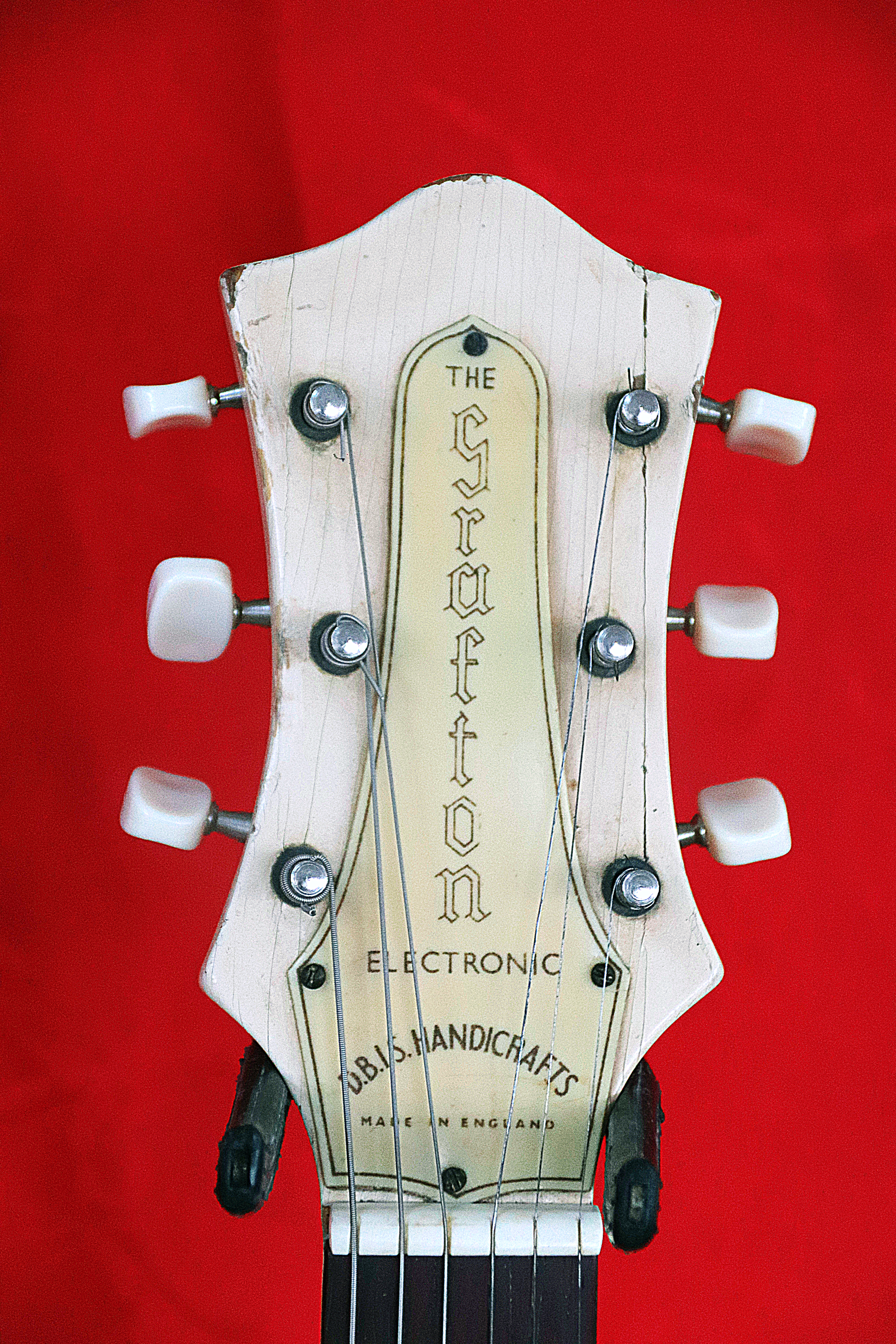
Those visual searches turned up another Grafton guitar sold by a German dealer via vintageandrare.com. It was very similar to Jean Louis’ guitar, but with a natural-finish body and head, a side-mounted regular jack, only "The Grafton" on the head, and "A V.S.E. Product" stamped on the pickup. The sales blurb suggested a connection to a British maker, Abbott-Victor, but we found nothing to support that.
In many cases a general online search for an obscure brand can be frustrating. So you might want to look at some guitar-history books. I have quite a library, and as an author I would, of course, encourage you to investigate the enormous amount of curated knowledge that exists in print. But I found nothing at all on Grafton.
A good next move is to check out specific online resources—and a smart place to start is right here at Reverb.com, where a huge number of guitars have been bought and sold during its existence for the past ten years.
The big search box at the top of Reverb’s home page, "Shop for used & new gear…," is a great way to find loads of instruments currently for sale. On the day I typed in "Grafton," I got a few of those plastic saxes, a banjo, and some Rico Graftonite woodwind mouthpieces—wonderful if that’s what you’re looking for, but of no help to our guitar quest.
However, there’s a trick you can use to attempt a deep dive into any website beyond what its search box offers. Type site: in front of the basic website address, without a space (in this case site:reverb.com) and then, after a space, your search term (in this case site:reverb.com grafton) and you’re presented with some obsolete listings. Oh well—I just got more unrelated saxes, banjos, trumpets, and so on, and making the search term grafton guitar didn’t help.
A few sites have collections of guitar catalogs you can look at that sometimes can help to track down more info on a guitar you’re interested in. My go-to is Steve Brown’s excellent VintAxe.com, which for a small subscription will give you access to catalogs from (at the last count) 640 electric brands and 182 acoustic brands. Unfortunately, Grafton is not among them.
A useful site for hunting older-but-not-too-old guitar info is the Internet Archive Wayback Machine (archive.org/web/), whose tagline sums up its staggering appeal: "Explore more than 865 billion web pages saved over time."
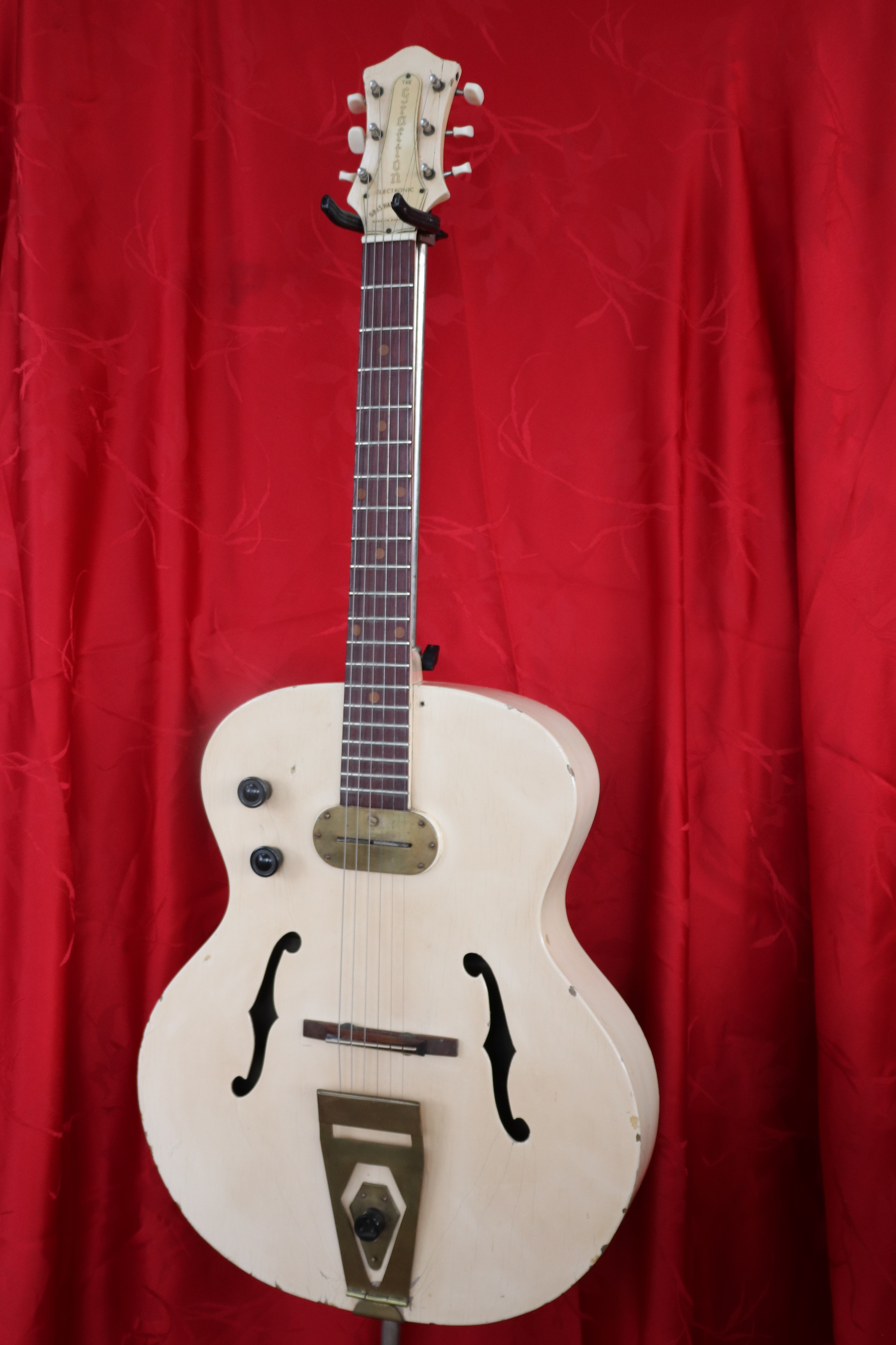
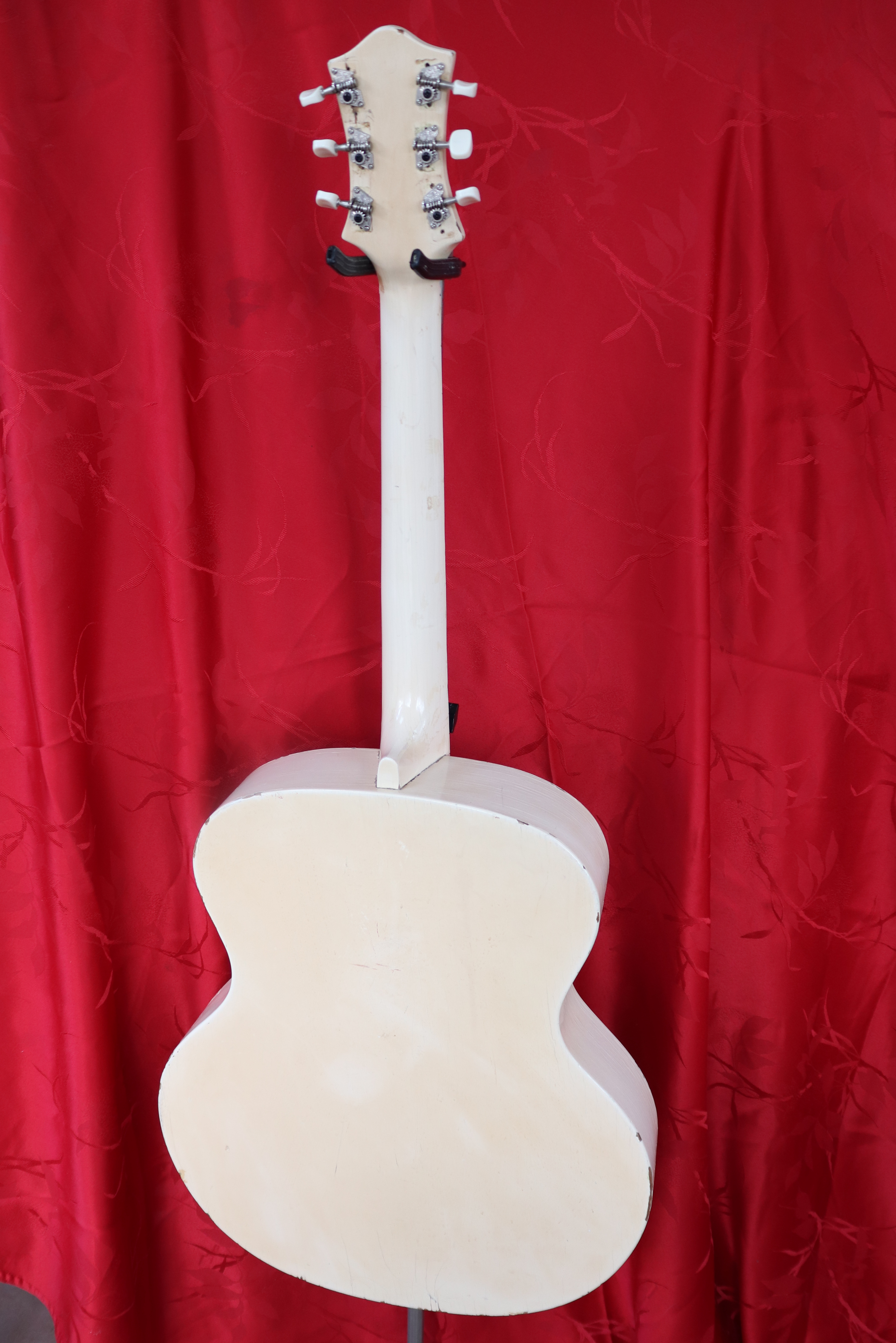
Punch a site address into the Wayback search box and in most cases you’ll get links to defunct versions of the site in question. Click/tap on a date and the site as it was comes into view, some more complete than others. Put in Fender.com, by way of example, and you’re presented with various saved versions of that site since 1996, which is as far back as Wayback goes.
For our mystery Grafton we need to go back much further. Another of my fave info sites is David Gleason’s World Radio History (worldradiohistory.com/index.htm). Don’t be fooled by the title. While the accent at WRH is on scans of books and magazines and other print items relating to radio and electronics, there are plenty of valuable musical resources there as well. I would set aside a few weeks if you want to have a proper look around. But for the purposes of the Grafton guitar, which we know is British-made, I went to "Search all UK publications." You can filter the results in various ways, and at last I came up with some (very) helpful items.
Among the collection at WRH is a good showing for Melody Maker (1926–2000), the British popular-music newspaper that many musicians would read. An issue from June 1947 has an ad for Dance Band Instrument Suppliers, a music shop in Rupert Street in central London, announcing the arrival of "our quota" of the "Grafton all-white all-electric guitar," in Standard or De-Luxe versions.
This is it! Remember the "D.B.I.S." on Jean Louis’ all-white Grafton? Now we know that’s Dance Band Instrument Suppliers, the distributor of the guitar. Further searches at WRH revealed ads in Melody Maker and in Musical Express during 1947 that identify Chester-Hayes Products, in Garrick Street in central London, as the manufacturer of Grafton guitars and Stan Timms at Chester-Hayes as their likely builder.
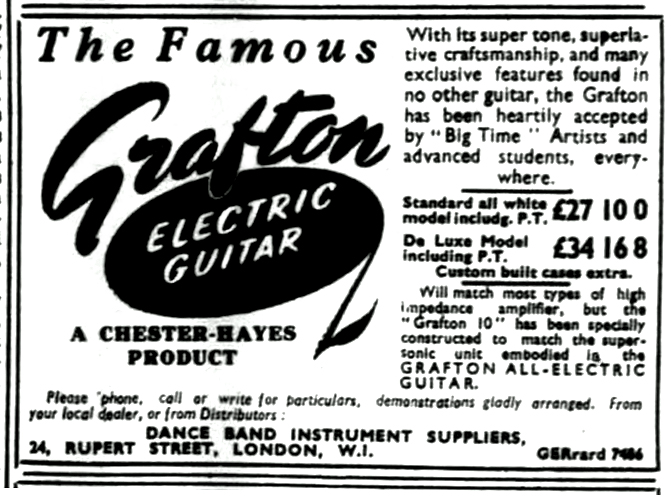
Based on the evidence of these ads, it seems the Grafton didn’t last long: there’s no sign of anything after 1947. But that vintage does make it a contender as the first UK-made hollowbody electric. Its short life isn’t such a surprise, though. In those lean times in the UK following World War II, many businesses struggled to survive. And also, some British guitarists still needed convincing about the usefulness of an electric guitar. I know: the past is a different country.
When you’re looking for info on a rare or obscure or simply odd guitar, don’t forget that you can always put your phone away, or turn off your computer, and talk to someone. Forgive me if this seems a radical idea. But do try it. Ask other musicians. Seek out that repairer or builder who seems to know about the old stuff. And now by all means get out your phone again and call around a bit. Build a network of helpful people and make use of them.
With that in mind, I sent some pictures of the distinctive pickup on Jean Louis’ Grafton to Lynn Wheelwright. Lynn is a renowned collector and diligent researcher, and he knows more about early pickups than anyone I can think of. He reckons this one is an interesting hybrid.
"It looks to be a combination of an early ‘30s Dobro split-pole design and a late ’30s Kay non-bobbin loose coil," Lynn tells me. "I’ve seen horseshoe-style magnets in many shapes and sizes used in combination with a variety of coils. And yes, it’s very closely related to the late’-30s Gibson bar, a.k.a. the CC-style pickup, which in my opinion is borrowed from a National-Dobro design. The Grafton’s pickup would have been old technology for the late ’40s, compared to the US at the time—and I see this same sort of older tech used in early post-war and ’50s Japanese pickups."
Jean Louis is pleased to learn all this new information about his guitar, even if its strange connector has so far prevented him from plugging the guitar in. Played acoustically, he says it sounds like a laminated guitar with the light strings it came with, and he finds it rather well made and fairly comfortable. "The white finish seems old, cracked, and peeling in places, and I don’t know if it’s original," he adds. "This guitar was definitely made to play electric! I’m trying to find a way to connect the pickup without throwing away that original connector. But anyway, this remains a fascinating guitar—and still quite a mysterious one."
About the author: Tony Bacon writes about musical instruments, musicians, and music. His books include Electric Guitars: Design And Invention and Legendary Guitars. Tony lives in Bristol, England. More info at tonybacon.co.uk.
